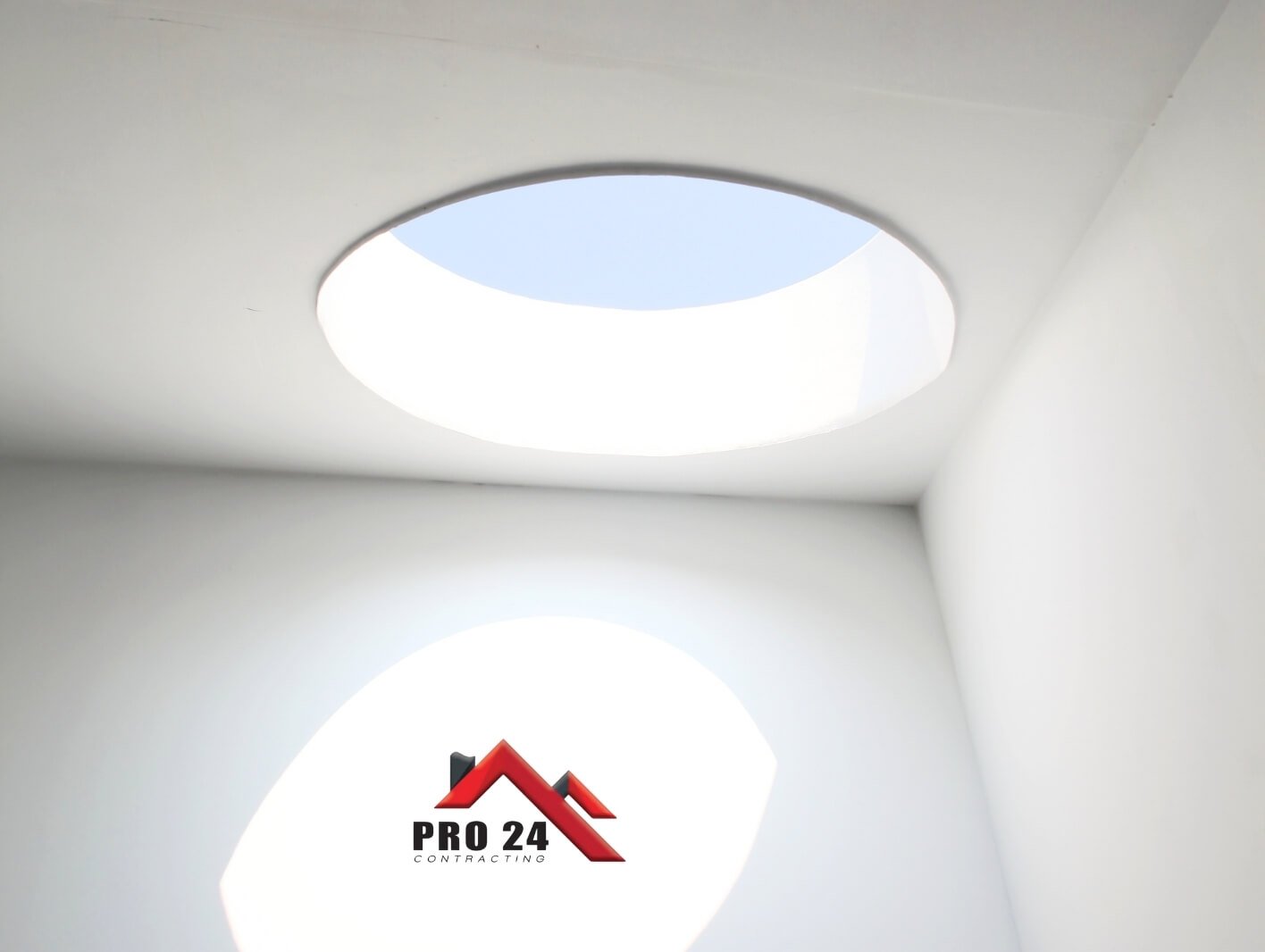Adding natural light to your home has a range of benefits, from improving your mood to reducing energy costs. While many homeowners turn to skylights for this purpose, a lesser-known but equally effective option is the sun tunnel.
Designed to capture sunlight and direct it into interior spaces, sun tunnels are a simple and cost-effective way to brighten rooms that may not have access to windows.
In this article, we’ll dive deep into what a sun tunnel is, compare it with other options like skylights, and explore why it might be the perfect addition to your home. We’ll also cover key factors such as installation, cost, and the specific benefits of house roof tunnel lighting.
What is a Sun Tunnel?
A sun tunnel, also known as a tubular skylight or light tunnel, is an innovative solution for bringing natural light into spaces where traditional windows or skylights might not be practical. Sun tunnels consist of a clear acrylic dome installed on your roof that captures sunlight.
This light is then reflected down a highly reflective tube into a light diffuser inside your home, which spreads the light evenly throughout the room.
Unlike a traditional skylight, which acts as a window on your roof, a sun tunnel is designed specifically for areas of your home that don’t have access to exterior walls, such as hallways, bathrooms, closets, and laundry rooms.
Sun Tunnel vs Skylight: Which is Right for You?
When considering a sun tunnel vs skylight, both options bring natural light into your home, but they do so in different ways. Skylights are large, window-like openings that offer a direct view of the sky.
Sun tunnels, on the other hand, focus on funneling light into rooms without providing a view. Depending on your needs, one may be better suited for your home than the other.
Advantages of a Sun Tunnel
- Cost-Effective. Installing a sun tunnel is generally more affordable than a skylight. The materials are less expensive, and the labor involved is much simpler.
- Quick Installation. A light tunnel can be installed in just a few hours, whereas a skylight may require several days due to the need for structural changes, framing, and drywall work.
- Ideal for Smaller Spaces. A sun tunnel is perfect for compact areas like closets, bathrooms, or hallways where a full-sized skylight would be too large or impractical.
Advantages of a Skylight:
- More Light. Skylights provide more direct natural light, which can flood a room and brighten a larger area.
- Sky Views. With a skylight, you’ll enjoy views of the sky, which can add to the ambiance of the room.
Choosing between a sun tunnel vs skylight depends on factors such as the room’s size, your budget, and your aesthetic preferences.
The Installation Process for a Sun Tunnel
One of the biggest selling points of a sun tunnel is its ease of installation. Unlike skylights, which require cutting into your roof and framing, installing a sun tunnel involves less invasive work.
Step 1: Choosing the Location
The first step is determining where you want the house roof tunnel lighting. Rooms with little to no natural light, such as bathrooms, hallways, or closets, are excellent candidates.
Step 2: Installing the Roof Dome
Once the location is chosen, a hole is cut into your roof to install the dome that captures sunlight. This dome is made of durable acrylic or polycarbonate and is designed to withstand weather conditions while still maximizing sunlight intake.
Step 3: Installing the Reflective Tube
After the dome is installed, a highly reflective, flexible tube is fitted from the roof to the ceiling of the room below. The tube is designed to reflect as much light as possible, ensuring that even on cloudy days, the room receives ample illumination.
Step 4: Installing the Light Diffuser
Finally, the light diffuser is installed on the ceiling. This component is responsible for spreading the natural light evenly throughout the room. The diffuser blends seamlessly with the ceiling, so it doesn’t detract from the room’s aesthetic.
The entire installation process can take as little as 3 hours, making it a quick and efficient way to brighten your home.
Sun Tunnel vs Skylight: Light Output
When considering the light output of a sun tunnel vs skylight, it’s important to understand that skylights provide more direct and often brighter light. However, light tunnels are still highly effective at illuminating small or windowless rooms.
Sun tunnels capture sunlight through a small opening in the roof and magnify it as it travels through the reflective tube. This concentrated light can then brighten areas like hallways, bathrooms, and closets that typically don’t receive any natural light.
On the other hand, skylights offer more direct light exposure and are ideal for larger, more open spaces like living rooms or kitchens. For smaller rooms, a sun tunnel often provides just the right amount of light without the need for a larger and more expensive installation.
The Benefits of Sun Tunnels for Your Home
Sun tunnels offer a range of benefits beyond just adding natural light to dark rooms:
- Energy Efficiency. By increasing the amount of natural light in your home, you’ll reduce the need for artificial lighting during the day. This can lower your electricity bills and decrease your home’s overall energy consumption.
- Enhanced Mood and Productivity. Natural light has been shown to improve mood and productivity. By adding a sun tunnel to rooms that don’t receive much daylight, you can create a more pleasant and uplifting environment.
- Easy Installation. As mentioned earlier, light tunnels are relatively easy to install. This means less disruption to your home and lower labor costs compared to skylights.
- Aesthetic Appeal. A sun tunnel can subtly enhance the aesthetic appeal of your home’s interior. Because they are flush with the ceiling, they don’t interrupt the flow of the room and blend in seamlessly with any decor.
- Increased Home Value. Adding natural light to dark, windowless spaces can boost your home’s resale value. Many potential buyers are drawn to homes with abundant natural light, making a sun tunnel a sound investment.
House Roof Tunnel Lighting: A Cost-Effective Alternative
One of the biggest advantages of choosing house roof tunnel lighting is the cost savings. Installing a sun tunnel is much more affordable than installing a skylight. The materials are less expensive, and the labor costs are significantly lower since it doesn’t require major structural changes.
Sun Tunnel Costs: The cost of installing a sun tunnel varies depending on the type (rigid vs. flexible) and the complexity of the installation. However, on average, you can expect to pay between $850 and $2,250 for a light tunnel installation. This is considerably less than the cost of a skylight, which can range from $2,800 to $4,700.
Sun Tunnel vs Skylight: Cost Comparison
When it comes to cost, there’s a clear difference between the two options. Skylights not only require more expensive materials but also involve extensive labor and potential structural changes to your home. This makes skylights a more costly option overall.
Skylight Costs:
- Fixed Skylight: $2,800 – $4,700 (including installation)
- Vented Skylight: $3,500 – $5,500 (including installation)
Sun Tunnel Costs:
- Rigid Sun Tunnel: $850 – $2,250 (including installation)
- Flexible Sun Tunnel: $850 – $1,700 (including installation)
For homeowners looking to add natural light to smaller spaces without breaking the bank, a sun tunnel is a more budget-friendly choice.
Why a Sun Tunnel Might Be Right for You
If you’re seeking a way to bring natural light into areas of your home that typically lack sunlight, such as bathrooms, hallways, or closets, a sun tunnel is an outstanding choice. This innovative solution is not only more affordable and easier to install than traditional skylights, but it also effectively illuminates spaces where conventional windows may not be feasible or practical.
When weighing the options between a sun tunnel and a skylight, it’s essential to consider several factors, including the size of the room, your budget, and the amount of light you wish to introduce into the space.
For smaller, windowless areas, sun tunnels offer a cost-effective and efficient method for enhancing your home’s brightness without the need for major renovations. They work by capturing sunlight through a dome installed on the roof and channeling it through a reflective tube to deliver soft, natural light directly into your chosen area.
Investing in a sun tunnel not only boosts natural light levels but also contributes to greater energy efficiency. By utilizing sunlight during the day, you can reduce your reliance on artificial lighting, leading to lower energy bills and a more eco-friendly home.
Additionally, the increased illumination creates a more inviting atmosphere, transforming even the darkest corners of your living space into warm, welcoming areas.
Overall, a sun tunnel serves as an aesthetically pleasing and practical solution for those looking to enhance their home’s natural light while enjoying the myriad benefits of a brighter, more cheerful environment. With the ease of installation and a variety of styles to choose from, sun tunnels can be an excellent addition to any home, providing a seamless blend of functionality and elegance.

